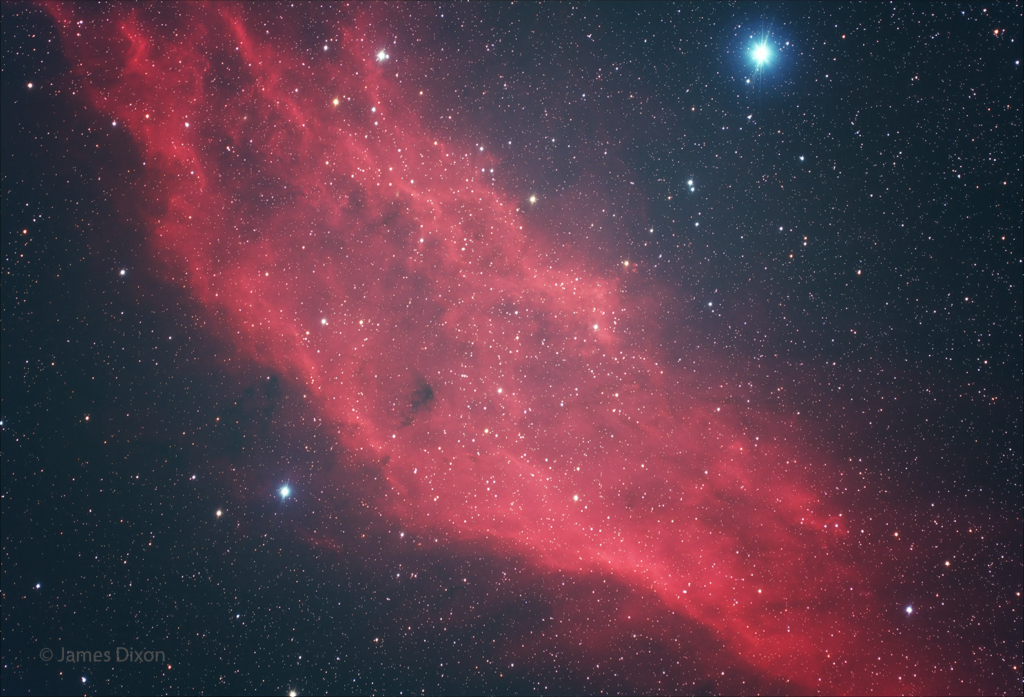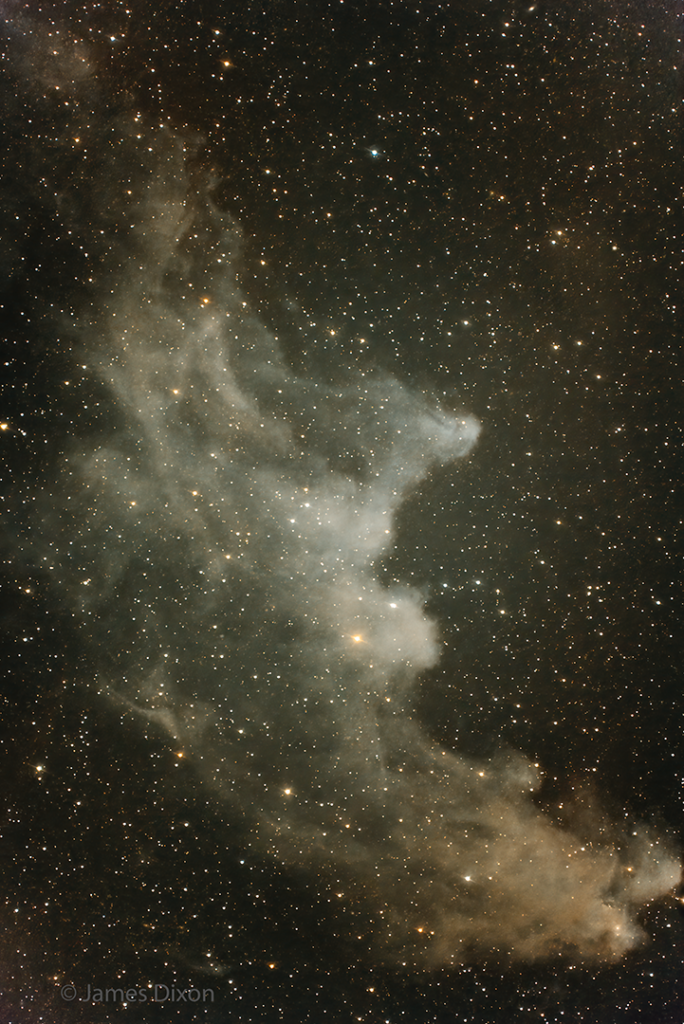It was a cold night at the River Ridge Observatory last night. It was 25F when I left at 10:30. But there was no wind and no humidity, just a soul sucking cold that wanted to kill me.
I started with the California Nebula in Perseus which I intended to shoot with my dual narrowband IDAS NBZ UHS filter but apparently I can’t read or had the filters in the wrong cases and shot it with my broadband IDAS LPS D3 filter. The intended filter would have brought out the red better and blocked most everything else. The NBZ filter is for nebulae that glow on their own, the LPS is for nebulae that reflect light from nearby stars.
Then I moved to the Witch Head Nebula in Eridanus which I did intend to shoot with the broadband filter so I was all set. This picture is actually upside down but it doesn’t look like a face that way. It is lit up by the star Rigel just to its left from out point of view and both are about 900 light years away.





